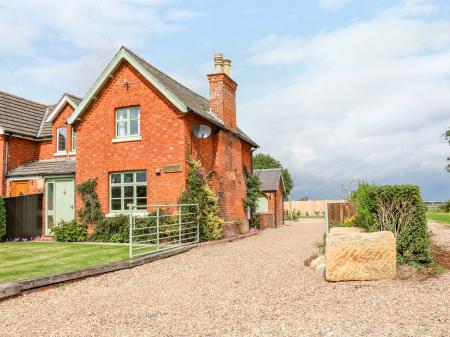
History
The story is a fascinating one, and it began with John Parkinson, a mining entrepreneur. In the early 19th century Parkinson built a coal mine, but the mine proved unsuccessful and had to be closed.
That might have proved a financial disaster save for what followed. Water seeping from the mine shaft was found to contain minerals that were healthy for both humans and animals.
The lord of the manor was Thomas Hotchkin, and he was quick to seize on the opportunity to attract visitors to his newly discovered springs. He built a bathhouse for visitors to bathe in the mineral-rich waters, then a hotel. For the next 50 years, the Hotchkin family developed the 'Iodine Spa', with spa baths and accommodation for visitors.

The real birth of Woodhall Spa as a town came in the 1880s when the family sold their spa baths to a group of London investors. The investors hired architect Richard Crane to develop a planned settlement, with wide, elegant avenues in a wooded setting. The centre of the new community was the Spa Bath and Pinewoods Bath.
The real heyday of Woodhall Spa was the Edwardian period, when high society, even royalty, flocked to stay at the Victoria Hotel. The village gradually lost its importance as a fashionable spa, but not before Lady Weigall converted her concert pavilion to create the famous Kinema in the Woods.
Lady Weigall was responsible for Petwood House, now a hotel, an Edwardian stately home in Tudor Revival style. She called in the architect and garden designer Harold Peto to lay out the formal Italianate gardens that surround the house, with wide, sweeping lawns, temples, and beautiful water features. Petwood House Gardens are open for everyone to enjoy; you do not have to be a hotel guest to enjoy the outstanding Grade II listed gardens.
RAF Woodhall Spa was developed outside the village and large sections of the village were used by the military in WWII. The Petwood Hotel was used as an RAF officer's mess, most famously by the 617 Squadron, popularly known as the Dambusters. A memorial to the Dambusters stands in Royal Square.
The historic church of St Leonards is a tiny 13th-century chapel standing near to the ruins of Kirkstead Abbey. St Leonards was cited by Simon Jenkins in his popular book, 'England's 1000 Best Churches'. The chapel was probably a chantry for the Abbey and was erected in memory of Hugh de Breton, whose 13th-century effigy lies near the altar. The church is remarkably complete, with its original 13th-century door and Norman font.

Another significant church is St Peter's, an unobtrusive Victorian building erected in 1893 to a design by Hodgson Fowler, a highly respected 19th-century architect. St Peter's replaced the former parish church of St Andrews which was considered too small for the growing town.
Just off Broadway is the Cottage Museum, with displays on local history. The museum is housed in a flat-pack house, made of corrugated iron. The house was used for many years by Thomas Wield, who made bath chairs to carry patients to the mineral baths. It was later the home of his son, John Wield, an early photographer. Mr Weild's photographs, taken on glass plates, form part of the fascinating museum collection, along with exhibits tracing the development of the spa.
One of the most intriguing historic buildings in the area is the Tower on the Moor, a 4-storey brick tower. The tower houses a turret stair and is all that remains of a 15th-century hunting lodge built for Ralph Cromwell of nearby Tattershall Castle.








 We've 'tagged' this attraction information to help you find related historic attractions and learn more about major time periods mentioned.
We've 'tagged' this attraction information to help you find related historic attractions and learn more about major time periods mentioned.


